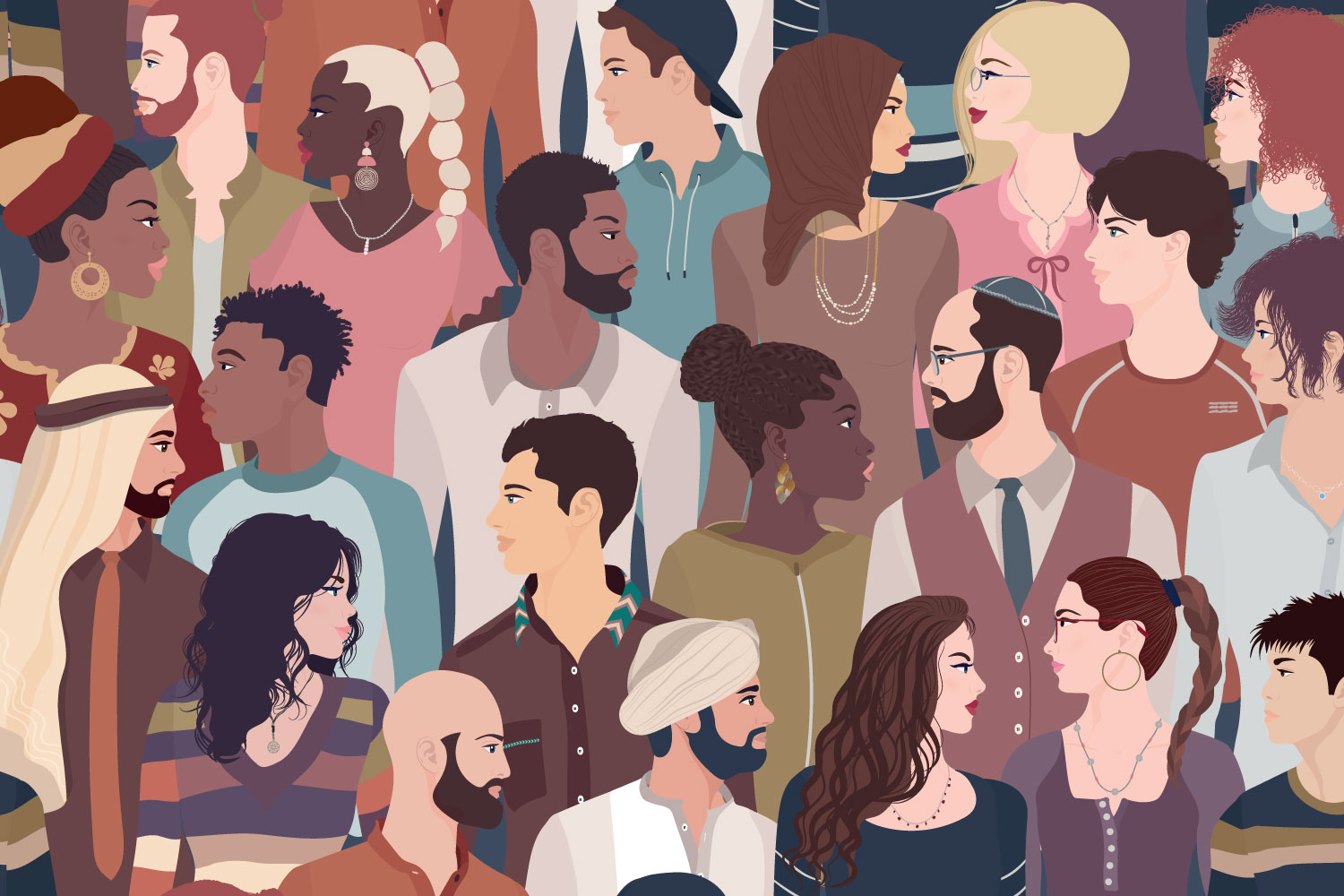The Big Chill: Why Nonprofits Should Care about Affirmative Action
Exploring how nonprofits can remain committed to supporting the health, economic security, and well-being of historically marginalized communities — even after the end of affirmative action.

What can nonprofits do to continue supporting marginalized communities with the Supreme Court striking down affirmative action?
The role of nonprofits in a post-affirmative-action world.
Last June, the U.S. Supreme Court’s consolidated decision held that the use of affirmative action (or “race-conscious” admissions) at two higher education institutions violates the 14th Amendment’s equal protection clause and Title VI of the Civil Rights Act of 1964.[1] These suits were brought by the (ironically named) Students for Fair Admissions (SFFA) against Harvard University and the University of North Carolina, and they capitalized on a line of prior cases that had already begun to erode the practice. Moving forward, it remains to be seen how the fate of affirmative action will reverberate in other contexts, such as the nonprofit sector.
Nonprofit funding is vital in addressing discrimination against historically marginalized groups (the central principle of affirmative action), even as funders fail to prioritize this work in a way that is proportional to other giving. Will these paltry philanthropic investments in racial equity and justice be further diminished as a result of the Court’s decision?
The Immediate Stakes: Opportunity Gaps in the Higher Educational Context
The playing field was already far from even WITH race-conscious admissions. While college and university enrollment has declined for both white and Black students in recent years, the decreases are disproportionately larger when it comes to Black students. Thirty-four percent of Black adults have an associate’s degree or higher, as compared to 50% of white adults. Even then, Black adults end up incurring nearly 50% more debt than white students to obtain their education.
Nonprofits and charitable foundations witness similar disparities when it comes to the health, economic security, and well-being of historically marginalized communities. The racial wealth gap is just one powerful example. Because nonprofits and charitable foundations also frequently apply a race-conscious lens, they girded themselves for a potentially devastating case outcome. The William and Flora Hewlett Foundation, for example, went so far as to invest in preparatory research to explore the implications of an unfavorable decision for the philanthropic efforts of charitable foundations and the activities of nonprofit organizations, which they shared on their website.
In anticipating the worst-case scenario, this preparatory research proved to be prescient. Likewise, Justice Ketanji Brown Jackson’s analysis in her dissenting opinion exposes the paradoxical nature of the Court’s holding: “Requiring colleges to ignore the initial race-linked opportunity gap between applicants [. . .] will invariably widen that gap, not narrow it. It will delay the day that every American has an equal opportunity to thrive regardless of race.” This is because race-neutral alternatives, including class/income, have not proven to be as efficacious in addressing disparities.
The Potential Chilling Effect of the Ruling Outside of Higher Education
If taking race directly into account during the admissions process at public universities or institutions that receive federal funding is no longer permitted, what does the future hold for nonprofits? Some of the following are urgent new questions:
- Will nonprofits that receive public funding and serve historically disadvantaged groups find themselves in jeopardy of losing those funds by carrying out their missions?
- Will charitable foundations shy away from making grants designed to advance racial justice and racial equity or efforts to fund community-based organizations led by people of color?
- How will this ruling affect nonprofits that provide grants or scholarships that aim to benefit historically disadvantaged individuals/communities?
These questions have caused concern among many in the nonprofit sector. President of the nonprofit and philanthropy membership group, Independent Sector, Akilah Watkins noted that the decision “could touch how [nonprofits] hire, build our boards, make funding decisions, and design and deliver our programs.” As a result, nonprofits may be discouraged from exercising their current legal rights to the full extent out of fear of violating the law. This so-called chilling effect on nonprofits is concerning given that they already operated in a challenging environment before the decision and faced two harrowing realities:
Reality 1: Funding for this work is already grossly deficient.
Of every philanthropic dollar awarded, it is estimated that only 6 cents goes towards racial equity work and a single cent towards racial justice work.
Reality 2: Commitments for this work were likely more performative than constructive.
In the wake of the George Floyd protests, it is unclear if the increased commitments from institutional funders contribute to substantive efforts. For instance, the Washington Post reports that more than 90% of the $5 billion that public companies and their foundations pledged for this work has been allocated as loans or investments from which they will profit.[2] What’s more is that only a small fraction of so-called racial justice and equity funding is dedicated to grassroots organizing and movement-oriented work; instead, predominantly white organizations have co-opted language to avail themselves of support.
Eyes on the Thermostat
Since the Court released its opinion, there have been a series of developments that we should keep watching.
Development 1: Funders and philanthropists commit to standing with DEI.
More than 140 funders and philanthropic organizations issued a joint statement pledging to “remain steadfast in [their] collective mission to create a more equitable nation” and “to advocate for the human dignity of all people . . . with renewed vigor and commitment.”
This is a powerful message to the nonprofit world in light of the few breadcrumbs the Court left itself to follow in future decisions. That is, justices who offer concurring (or non-binding opinions) often telegraph what new challenges they would like plaintiffs to bring before the Court. For example, Justice Gorsuch’s concurring opinion indicated that entities (such as some nonprofits) that accept federal funding could run afoul of Title VI of the Civil Rights of Act of 1964 by considering race, writing, “we can safely say that Title VI forbids a recipient of federal funds from intentionally treating one person worse than another similarly situated person on the ground of race, color, or national origin.”
Development 2: Republican attorneys general attack corporate DEI initiatives.
Corporate Diversity, Equity, and Inclusion (DEI) initiatives have come under attack after 13 state attorneys general issued a provocative letter denouncing these workplace programs as discriminatory and urging companies to “cease any unlawful race-based quotas or preferences.”
This development, though limited to DEI initiatives in the corporate context, is
overreaching at this point, since the Court has yet to take up a relevant case. However, it
does evince a willingness for opponents of race-conscious practices to begin moving the needle in other contexts when it comes to DEI workplace initiatives, including hiring and retention.
Development 3: A VC firm operating a grant contest supporting Black women entrepreneurs has been sued for discrimination.
The American Alliance for Equal Rights has sued The Fearless Fund on behalf of white and Asian American plaintiffs, alleging that the fund’s Strivers Grants Contest, which awards grants to Black-women-owned small businesses, discriminates against non-Black women. The awarded funds are a drop in the bucket, given that “less than 1% of venture capital funding goes to businesses owned by Black and Hispanic women.” While the case is pending, the United States Court of Appeals for the Eleventh Circuit granted a temporary injunction that pauses the contest. While the case is pending, the United States Court of Appeals for the Eleventh Circuit granted a temporary injunction that pauses the contest. And in December, The Council on Foundations and Independent Sector filed a joint amicus brief in support of the Fearless Fund, calling on the court to dismiss the lawsuit based on the First Amendment protection of charitable grants as expressive conduct.
This development gets closer to the grantmaking function that many nonprofits perform. Therefore, it is worthy of monitoring as opponents of affirmative action and race-conscious remedies grow bolder.
Where We Are Now
Nonprofits and charitable foundations are now left wondering what practices may expose them to legal action and how they may continue to operate in alignment with their values and objectives while complying with the evolving state of the law. Some may be actively educating themselves about their legal vulnerabilities and ways to defend against them.
Specifically, certain grant funding agreements that further DEI could find themselves the subject of challenges under 42 USC Section 1981 (as was the case with The Fearless Fund), which prohibits discrimination in the making and enforcement of contracts (as distinct from gifts). Nonprofits and charitable foundations that rely on federal funds to support programs or initiatives might also be newly vulnerable to challenges under the Civil Rights Act of 1964.
It bears asserting that there is currently nothing to stop nonprofits from considering race as a part of a grantmaking process or acceptance into a program. However, it is likely that some nonprofits could begin, out of an abundance of caution, to move toward a discussion of life experiences that is akin to the Court opinion’s “challenges bested, skills built, or lessons learned” as they intersect with race. Justice Roberts cautiously allowed for this type of applicant information to be considered in the college essay context.
Despite the grimness of some subsequent developments, it is encouraging to see signs that funders and nonprofits are collectively thinking about these challenges. Some in the funder community are vocal in their support of nonprofits serving historically marginalized communities. For example, Stacey Abrams and Julián Castro, as Trustees of the Marguerite Casey Foundation, have published a call to action to both funders and nonprofits urging them to keep their eyes on the proverbial prize.
Where We Go from Here
In this call to action, Abrams and Castro offer the following roadmap for nonprofits and funders moving forward with their work.
Recommendation 1: Stay on message.
Foundations must resist striking language from their messaging, grant applications, or grant programming that signals a commitment to racial justice and/or communities of color. It is more important than ever for foundations to stay the course alongside the nonprofits doing the important day-to-day work.
Foundations are important societal gatekeepers with influence. Nonprofits rely on more than just their funding support. Just as funders ask for nonprofits to prove their impact and provide evidence of sustainability for projects, nonprofits need to be assured their funding partners will stay the course. That is, when nonprofits pursue social change agenda in partnership with the communities, their funding partners must continue to articulate value for (and fund) this racial equity and racial justice work.
Recommendation 2: Support advocacy efforts.
Funders also must dedicate support to both grassroots movements and ensuing legal battles. The additional litigation to clarify the state of the law will be extremely costly, and many conservative groups—such as the faith-based 501 (c)(3) Alliance Defending Freedom (currently working to dismantle reproductive rights)—are extremely well-funded. In a characteristically blunt post, Nonprofit AF has some strong words about how the philanthropy sector’s negligence has led to the walking back of fundamental rights and freedoms, ending with a call for progressive funders to follow the blueprint of right-wing funders. Whether you agree with this criticism or not, it is essential to follow the proffered next steps of funding organizing and mobilization work, supporting the political work of 501(c)(4) organizations, and creating legal defense funds for progressive activists.
Relatedly, grassroots activism is both “underfunded and overlooked.” As Cathy Rogers, a research consultant for Social Change, writes, “In the complex ecosystem of social change, protest has a crucial and unique role: to change people’s minds about what is acceptable and what is possible. While insiders focus on what’s practical and achievable, social movements ‘change the political weather’; they make the previously unthinkable first thinkable and then conventional wisdom.” Accordingly, a new generation of philanthropists, such as oil heiress Leah Hunt-Hendrix, are pledging their support to grass roots activism. This type of support benefits nascent groups as well as those who employ tactics such as civil disobedience.
Recommendation 3: Focus on protection.
Funders (and nonprofits) need to continue to protect voting rights of historically marginalized communities. Without safeguarding this fundamental right, we will fail to have a functioning democracy that lives up to our founding principles. For example, the California-based Latino Community Foundation (LCF), now led by its new CEO, Julián Castro, is a nonprofit organization and funder that is building a movement of civically-engaged philanthropic leaders, investing in and supporting Latino-led organizations, and mobilizing political participation of Latinos in the state. In the lead up to the 2020 presidential election, LCF launched the largest campaign to mobilize Latino voters in California. The work of organizations like LCF is increasingly critical as voter suppression efforts intensify and regressive ballot measures and legislation are advanced.
Recommendation 4: Carry on.
Likewise, it is incumbent upon nonprofit organizations that serve historically marginalized communities to continue to provide services, resources, and advocate on behalf of their rights. The programming and grantmaking that nonprofits provide is now more important than ever post-COVID to help ameliorate the impact of deep-seated historical racism as well as systemic and structural inequity. The stakes are high but so are the resultant costs to America’s future should we fail to take concerted action to create a more equitable and just society.
Staying Out of the Cold
In conclusion, the state of the law has not changed for nonprofits, but it is essential for nonprofit leaders to monitor events in the coming months and years. Equally true is that collaboration between funders and their nonprofits, particularly when it comes to countering legal challenges to race-conscious practices in the nonprofit context, will be more important than ever.
Tell us: how is your nonprofit operating in this new landscape? What sources of information or guidance (trainings, articles, etc.) have you found useful? We invite you to share your stories.
Footnotes
[1] While the Court prohibits race-conscious admissions at public institutions (i.e. University of North Carolina) and private institutions that accept federal funds (i.e. Harvard University), it carved out an exception for military academies. However, this exception has been the subject of yet another lawsuit.
[2] For more on how to move DEI beyond performativity, check out this blog!
About the Author
Johnisha Levi (she/her) is a Senior Grant Writer and Content Creator for Elevate: Smart Grants for Powerful Social Change, where she advises nonprofits specializing in early childhood education, nutrition education, environmental justice, community organizing, racial justice, health equity, and adult literacy. She graduated from Harvard College, New York University School of Law, and Johnson & Wales University. In her free time, she is an avid reader of memoirs, African American history, and literary nonfiction and is currently working on a memoir.
Articles on Blue Avocado do not provide legal representation or legal advice and should not be used as a substitute for advice or legal counsel. Blue Avocado provides space for the nonprofit sector to express new ideas. Views represented in Blue Avocado do not necessarily express the opinion of the publication or its publisher.











